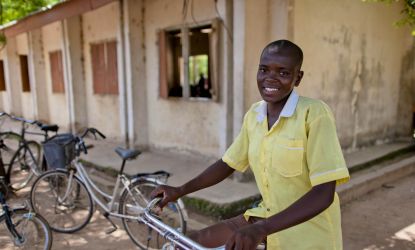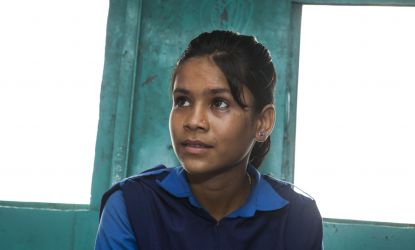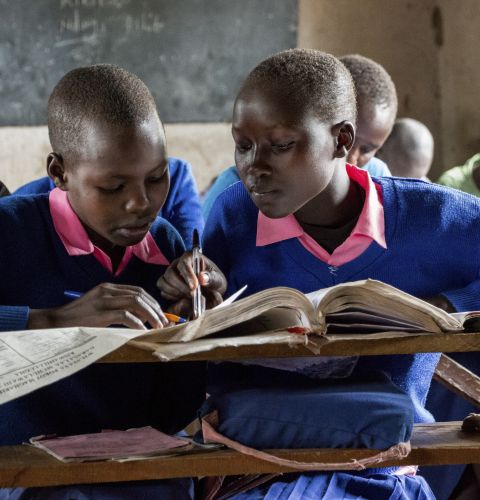Children's education – especially of girls – transforms lives and communities.
Educating girls specifically has enormous and far-reaching benefits. It reduces rates of child marriage, promotes healthier and smaller families, improves wages and jobs for women, and empowers women to become leaders at community and government levels.1
But around the world, nine million girls of primary school age will never start school or set foot in a classroom. This compares to about three million boys.2
ActionAid believes a good quality, education should be available to all children.
You can help achieve this goal by sponsoring a child.
We work in countries around the world to ensure that quality children's education isn't a privilege, but instead a right.
In countries where girls are denied an education through risk of violence or child marriage, we set up girls’ clubs and school committees so that girls can demand their right to education, free from abuse.
Education helps girls break out of the cycle of poverty
There is no dispute about the benefits of children's education, especially for girls.
- Better-educated women tend to earn more, have better jobs, and invest their earnings into their families. Every additional year of school a woman attends increases her wages by an average of 12 percent5.
- Increasing children's education, particularly in girls, reduces infant and maternal mortality. Educated mothers have fewer pregnancies, are less likely to give birth as teenagers, and are better able to access the maternal healthcare they need.
- Increasing girls' education reduces child marriage. Across 18 of the 20 countries with the highest prevalence of child marriage, girls with no education are up to six times more likely to marry as children than girls with a secondary education.
- Education helps give women the skills they need to take on leadership roles, including political positions. In those roles, they are much more likely to advocate for policies that benefit family and community life, like improved education and social services.6

Helping girls get to school safely
"My junior high school is a two-hour walk away from Ulkpong, where I live. Without a bicycle I would not be able to get to my lessons,” Carolina says.
Like other girls at risk, Carolina was given an ActionAid bike so that she can get to school quickly and safely.
Now I go to school every day and I’m doing well in class. I am determined to stay in school and go to training college so that I can become a teacher."
"Thank you ActionAid for my bicycle!”
Carolina can get to school safely and quickly with her ActionAid bike
Nana Kofi Acquah/ActionAid
Child sponsorship helps keep girls in school
Sponsoring a child helps them get the high-quality education that is their right. It pays for schoolbooks, fees, equipment and making sure they can get to school safely. It can even pay for a whole new school building in the village or town where the sponsored child lives.
By investing in education, children are given the skills and knowledge they need to build a better life for themselves. Find out more about child sponsorship and how it works.

Keeping girls in school during a crisis
Subarna, 13, usually takes a boat to school from her home in the village of Faridpur, Bangladesh. She wants to be a doctor. But her dream is at risk of being thwarted by floods. At least twice a year, her route to school becomes impassable.
"When the storm comes I can't go to school," she said. "I can't cross the big river in the small boat."
But now, during floods Subarna can carry on studying at a child-friendly space built near her village by ActionAid. She and her friends can safely reach the tin-and-timber hall where a local tutor helps the girls to continue with their studies.
If this child space wasn’t here then we would face a lot of problems. We wouldn’t be able to study. I’d be sat at home unable to do anything.”
Shubarna, 13, in school uniform on the boat she uses to get to school, Bangladesh
Mahmud /MAP/ActionAid
Footnotes
- 1https://www.malala.org/brookings-report/the-worlds-best-investment-girls-education
- 2https://news.un.org/en/story/2019/09/1046272
- 3https://www.unicef.org/education/girls-education
- 4https://www.unicef.org/education/girls-education
- 5
https://documents1.worldbank.org/curated/en/830831468147839247/pdf/WPS7020.pdf
Page updated 29 May 2025
